If you love the 1980s — and if you found your way to this website, you probably do — you MUST read Susannah Gora’s 2010 book, You Couldn’t Ignore Me If You Tried: The Brat Pack, John Hughes, and Their Impact on a Generation. Gora was first inspired to write the book when she was a sophomore at Duke University. She says she was sitting in her dorm room with her friends, watching one of the John Hughes films “for the eight-millionth time,” and it occurred to her just how universally beloved these 80s films are. They weren’t just a huge part of her adolescence; they were a huge part of everyone’s adolescence. “I had just had this light-bulb realization,” Gora claims, “that if nobody had done it yet, I wanted to write THE book about these films, not just how they were made, but the impact they had on culture and on the lives of the people who grew up watching them.” And eventually she did just that. Well, first she became a film journalist and editor for the (now defunct) Premiere Magazine, but she never lost sight of the dream that began in her dorm room. So, in 2007, Gora began interviewing virtually everyone associated with these films. The end result is a fun, informative, insightful, well-written and extensively researched love letter to 80s cinema, a book that treats these movies with the reverence they deserve. Since this year marks the 30th anniversary of the release of both The Breakfast Club and St. Elmo’s Fire, as well as the coining of the term “Brat Pack,” and since the mission of Like Totally 80s is to prove that the 1980s is the BEST decade of all time . . . well, we couldn’t ignore Gora’s book if we tried. So we reached out to Ms. Gora, who was more than happy to talk to us. In the following interview, we ask Gora about her book, about the legacy of John Hughes, and about which stars officially comprised the “Brat Pack.” 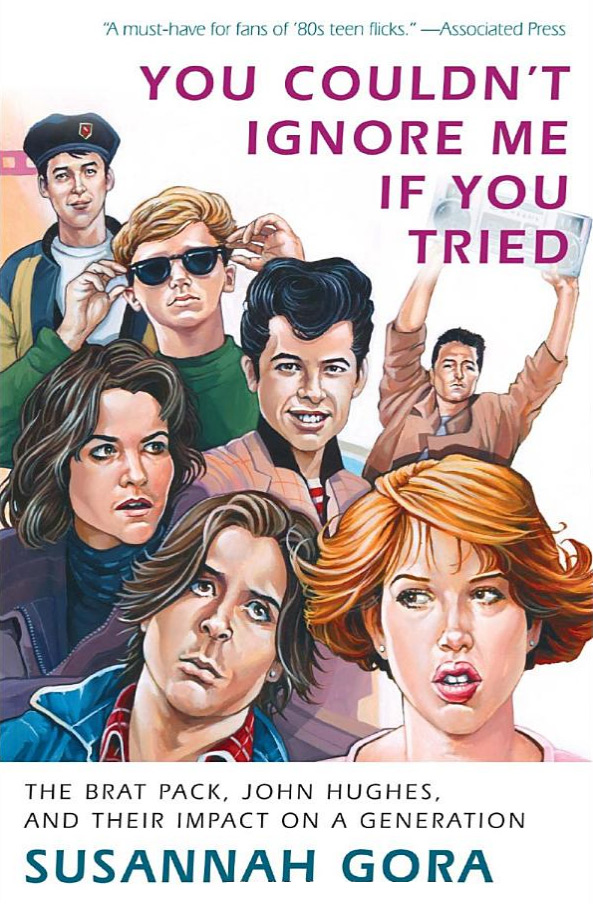
Q&A with Susannah Gora
LT80s: So, you interviewed everyone for your book — actors, composers, directors. Well, everyone except for John Hughes, who was notoriously private. Was it hard to get all these people to talk to you?
Susannah Gora: I really believed in my heart that I was trying to write THE book about these movies, and therefore anyone who had been an important part of them in any way, I really felt it was my duty to try to talk to them. Some of the people, I was lucky, and they said yes right away. Some of the people, it took a lot of convincing, or once I started interviewing a bunch of people, then they said yes. And a couple I was never able to interview– for example, Emilio Estevez and John Hughes, as you said. But I felt his spirit was in the book, because I interviewed so many people who worked with him and loved him. I actually finished the book before he passed away (in August 2009). And I had already finished my book and turned it in to my editor. And so then I had to revise the book to include the fact that he had passed away.
LT80s: Was there anyone who was a hard get, but you knew you had to interview this person for the project to work?
SG: Molly Ringwald. I definitely felt that I could not write this book without interviewing Molly Ringwald. And it was not particularly easy. It took a while — many, many months of me trying to get requests in to her from different people before she finally agreed to let me interview her. And then when she did, she was a fantastic interview.
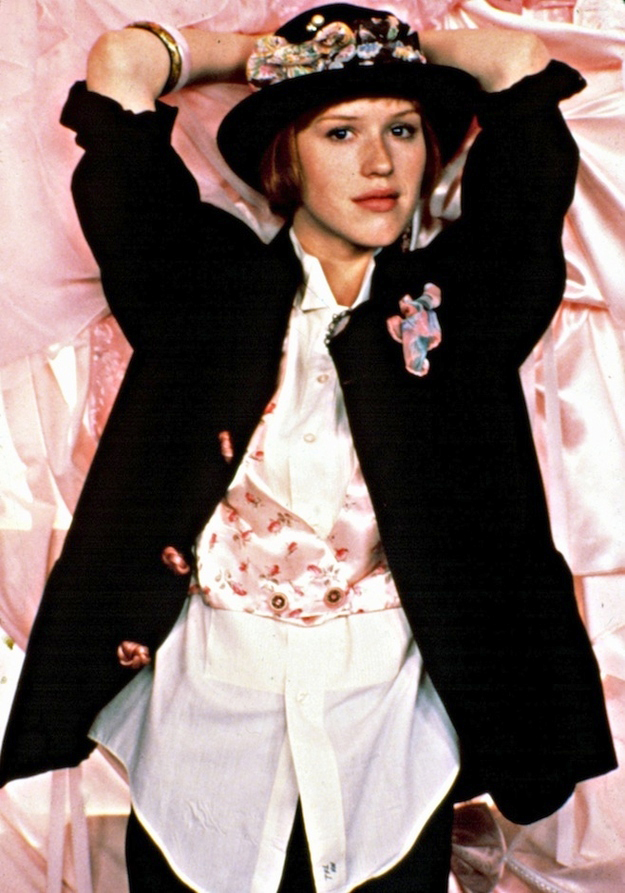 LT80s: A few years ago, my sons were watching the Nickelodeon show Victorious, and there was a whole episode that was a Breakfast Club parody. And it struck me, once again, how much of a cultural touchstone these movies are.
LT80s: A few years ago, my sons were watching the Nickelodeon show Victorious, and there was a whole episode that was a Breakfast Club parody. And it struck me, once again, how much of a cultural touchstone these movies are.
SG: Today’s teenagers really love these movies too. Just as every young person reads Catcher in the Rye growing up, that’s what these movies have become in terms of film. It’s a rite of passage to watch these films. People dress up as these characters for Halloween, and everyone knows who they are. There are so many iconic images from these films that are instantly recognizable. John Cusack holding the boom box above his head from Say Anything. Molly Ringwald’s character and Michael Schoeffling’s character leaning over to kiss at the end of Sixteen Candles. Judd Nelson at the end of The Breakfast Club, defiantly raising his hand. Images like that are so etched into our minds and hearts. And I don’t know if films today have images like that.
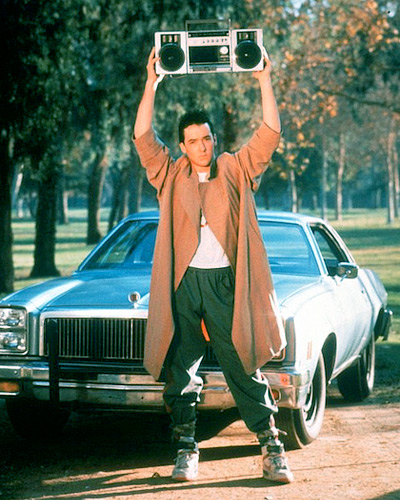 LT80s: Since you mentioned Catcher in the Rye . . . people have often said John Hughes is our Salinger. Do you think that’s an apt comparison?
LT80s: Since you mentioned Catcher in the Rye . . . people have often said John Hughes is our Salinger. Do you think that’s an apt comparison?
SG: I think so. Of course, there’s the reclusiveness . . . but it’s about much more than that. J.D. Salinger and John Hughes created these works of art about youth that will live on forever and that have become an essential part of the experience of growing up. It’s considered an essential part of the American adolescent experience to read Catcher in the Rye, and it’s considered an essential part of the American adolescent experience to watch The Breakfast Club. And Ferris Bueller’s Day Off. And Pretty in Pink.
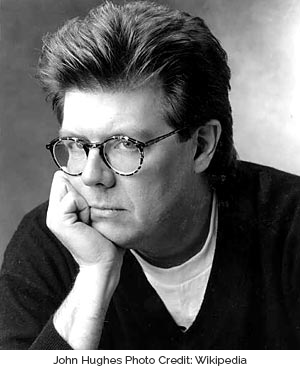 LT80s: What about John Green (author of the books The Fault in Our Stars and Paper Towns)? Is he the heir apparent?
LT80s: What about John Green (author of the books The Fault in Our Stars and Paper Towns)? Is he the heir apparent?
SG: I think he is. Now, I must confess: I haven’t seen those movies. But I think it’s entirely possible, if you’re a teenager today, you feel about those films the way people our age still feel about the 80s movies. But also, keep in mind, so many of the people who do powerful things in Hollywood today are of that age where they grew up loving John Hughes. And you can see the “Hughes-effect” in so many of the decisions being made in Hollywood. People don’t realize this, but before the John Hughes era, the whole “youth movies” thing was not really its own genre. There would be a movie occasionally about teenagers here and there. But only with the John Hughes moment did the birth of the huge youth genre of films begin. And a lot of it is cultural, that youth have so much going on emotionally, that it’s interesting to portray their emotions on-screen. And a lot of it is about dollars and cents, because for the most part, movies about teenagers are generally inexpensive to make. It’s not usually about some huge “Transformers/ CGI effect” thing. And the actors you put in them are largely unknown, so you don’t have to pay a fortune to get them to appear. And yet, these movies can be so profitable because teenagers will often go to see a movie over and over again . . . and they’ll bring their friends. Thirty-five year olds don’t tend to go to the movies with ten of their friends.
LT80s: This is an aside, but . . . for me the difference between the John Green books and the John Hughes movies is that, for John Green, the adults are not the bad guys. That’s sort of the thing in the John Hughes movies, right? Literally, in Ferris Bueller’s, the vice-principal is out to get Ferris. And in Breakfast Club, Ally Sheedy says, “When you get old, your heart dies.”
SG: I like that. That was actually one element of the John Hughes movies I never particularly related to — the whole idea of teenagers hating authority. But you’re absolutely right: of course, Ferris Bueller and the principal have an adversarial relationship. And in that same film, there’s Cameron and his dad, and even though we never see his dad, we feel his presence so much.
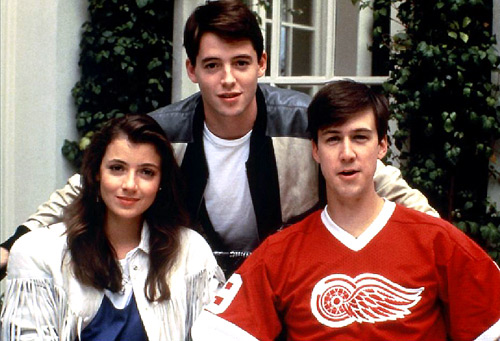 LT80s: In your book, you devoted a whole chapter to the origin of the term “Brat Pack.” Apparently, a New York Magazine journalist was supposed to write a piece on Emilio Estevez, so went out for a night on the town with Emilio and some of his friends, including Judd Nelson and Rob Lowe. But when this journalist went to write the article, he sort of took the piece in a different direction . . .
LT80s: In your book, you devoted a whole chapter to the origin of the term “Brat Pack.” Apparently, a New York Magazine journalist was supposed to write a piece on Emilio Estevez, so went out for a night on the town with Emilio and some of his friends, including Judd Nelson and Rob Lowe. But when this journalist went to write the article, he sort of took the piece in a different direction . . .
SG: This night at the Hard Rock Cafe turned out to be a fateful night in pop culture history. The journalist’s name was David Blum, and he was going to write an inside feature about Emilio Estevez, because at the time, Estevez was writing scripts and getting ready to direct a film. And he was a little younger, I think, than Orson Welles, when he did Citizen Kane, so people were saying, “Is Emilio the next Orson Welles?” That was the gist of what this inside piece was going to be. Then when David Blum actually was hanging out with Emilio and his friends, this broader story occurred to him: that maybe instead of just talking about this one actor, maybe a more interesting story would be to talk about this whole group of young actors who were really beginning to make it big in Hollywood.
LT80s: What was the inspiration for the term “Brat Pack”?
SG: What Blum told me was that he had been out to dinner with some of his friends in L.A. (Note: this was a different dinner than the one with Emilio, Judd Nelson, and Rob Lowe.) And they were all eating so much food at this restaurant, that one of them made the joke, “Oh, we’re like the Fat Pack,” a pun on “Rat Pack.” And the next day, Blum was driving around, and the term “Brat Pack” crossed his mind as a way of describing this young group of actors. Once that term was coined, it really spread like wildfire in the world of media. And remember this was pre-Internet!
LT80s: That’s what’s so interesting to me — how widespread that term became, in such a short time. I mean, I was fourteen at the time. I never read New York Magazine. How did I know about that term, “Brat Pack”?
SG: I think what happened was New York Magazine back then — well, it still is, but especially back then — was the epicenter of the cultural/media world. And to have a cover story about the “Brat Pack” put it in people’s minds. And there was a long time before you’d see an article about any of these actors that didn’t refer to them as a “Brat Packer.” And that even included people who weren’t even mentioned in the article. The term came to include any actor from the mid-80s who was in any movie about young people. It’s interesting because one really big effect the article did have, and it’s a sad one, is that so many of these actors had been friends in real life. I remember when I interviewed Ally Sheedy, she talked about how wonderful it had been to make this great group of friends — people from St. Elmo’s Fire, for example. But then when the article came out, none of them were as comfortable hanging out together. And the word Ally Sheedy used to describe that to me was “heart-breaking.” And it was, I’m sure, for them.
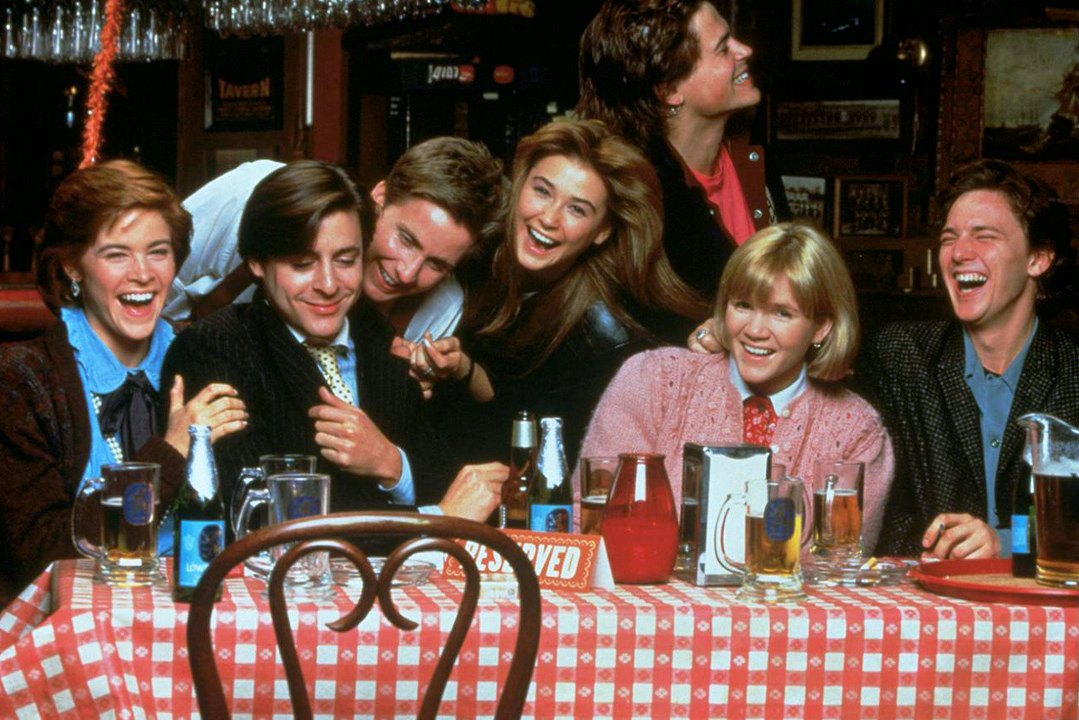 LT80s: Looking back, though, isn’t it kind of cool to be called a “Brat Packer”? Didn’t it give them an identity?
LT80s: Looking back, though, isn’t it kind of cool to be called a “Brat Packer”? Didn’t it give them an identity?
SG: I think now, thirty years later, the phrase “Brat Pack” has this vintage or nostalgic feel to it. But at the time, it might have held a lot of these people back. Even today, it’s a bit of a challenge for any actor or actress who becomes famous for a youth role to make the transition to grown-up roles. I think it’s possible that a term like “Brat Pack” made it even harder for a lot of these people. Not so much the word “brat,” but the word “pack,” which made Hollywood think of them as a group instead of as individuals. But something that I heard over and over again when I interviewed a lot of these actors is the general sense that although at the time, it might not have been the greatest thing to be associated with the “Brat Pack,” now that all these years have gone by, they are just so proud to have been a part of that moment and they can see how cool the phrase and the concept of the “Brat Pack” is.
LT80s: Let me ask you this: who IS the “Brat Pack”? Is Jon Cryer in the “Brat Pack”? I would say no.
SG: Obviously, it’s up for debate. It’s not like listing all the American presidents! However, I did find, in my “extensive research,” that there were eight people who were considered part of the “Brat Pack.” And I’m talking about what pop culture deemed the “Brat Pack.”
LT80: OK, let me see if I can do this… Emilio, Judd Nelson, Rob Lowe. Would we say Andrew McCarthy? Molly Ringwald? Hmmmm . . . Ally Sheedy? Anthony Michael Hall. Who am I leaving out?
SG: It’s a woman.
LT80: I’m guessing it’s not Mare Winningham . . . Demi Moore?
SG: That’s right. Demi Moore. Because she was in St. Elmo’s Fire, and she was engaged to Emilio Estevez. So these were people that the media considered the “Brat Pack.” So, for example, even though Matthew Broderick was Ferris Bueller, which is the heart of the 80s youth movies canon, no one would think of him as having been part of the “Brat Pack.” It’s not necessarily even about what role you had in a movie. It was who did the media think was part of this band of pals at the time.
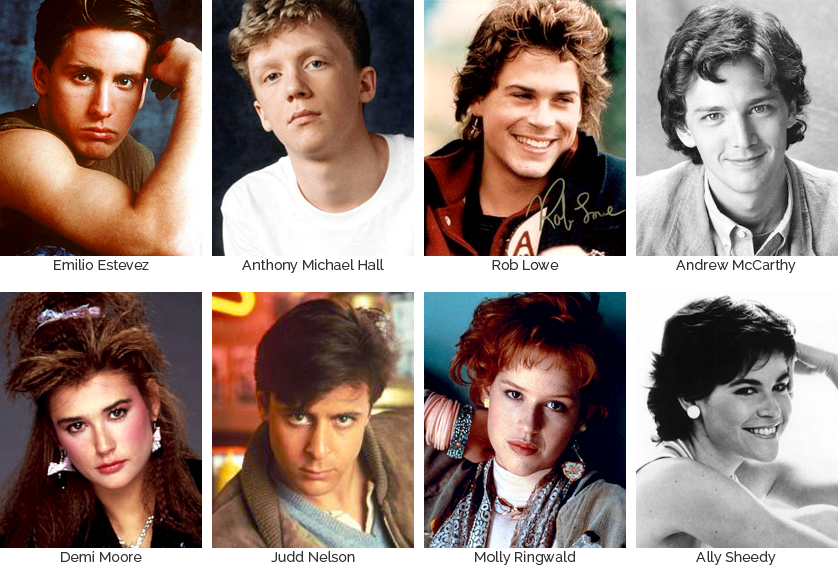 LT80s: OK, let’s look at those eight. Really, Rob Lowe is just as famous now as he’s ever been. He really made the transition. The other ones . . . you don’t see a lot any more. Even Demi Moore, who was hugely successful, has faded somewhat over the past decade.
LT80s: OK, let’s look at those eight. Really, Rob Lowe is just as famous now as he’s ever been. He really made the transition. The other ones . . . you don’t see a lot any more. Even Demi Moore, who was hugely successful, has faded somewhat over the past decade.
SG: Well,this must be said: there was a moment, in the mid- to late-90s, where you could argue that Demi Moore was the biggest female star in the world. You could even argue that she was bigger than Julia Roberts. But what you’re saying, basically, is that Rob Lowe and Demi Moore were more successful, career-wise? Yeah, I’d agree with that.
LT80s: OK, out of those remaining six . . . who do you think should have been more famous? Is there any one of that group of six that makes you think, “Man, what an under-utilized talent”?
SG: Well, I really do feel that Judd Nelson is a great dramatic talent. For example, he studied acting under Stella Adler, who was one of the great acting teachers of all time. And I really do feel that Judd Nelson has the talent and the energy to be considered one of the great actors of our time. When you watch the Breakfast Club, and you watch him, it’s like a James Dean, it’s like an Al Pacino. It’s just this pure energy. If I were running Hollywood, I would have Hollywood be a world where Judd Nelson would be considered in the same category as an Al Pacino or a Robert DeNiro. I really think he’s that great a talent.
But honestly, I feel they all have done pretty well. Most of them are still working actors, which is no small feat. They’ve had moments of greatness, since their “Brat Pack” days. For example, Ally Sheedy was the star of this excellent indy film called High Art, where she won the Independent Spirit Award that year for Best Actress. And the Independent Spirit Award is sort of the indy film version of the Oscars. And she got tons of critical acclaim for that. Molly Ringwald has done all sorts of interesting, cool things. She’s written a book of connected short stories. She has a singing career, where she sings jazz standards, and she starred in Cabaret on Broadway. Andrew McCarthy, if I’m not mistaken, is directing episodes of Orange is the New Black now. And he’s also an incredible, award-winning travel journalist. He has won the highest awards you can win for his travel writing. I guess what I’m trying to say is that sometimes culture might look at these people and say, “Oh, they had their moment in the 80s, and then they burned out.” In fact, they’ve all gone on to really cool things since then.
LT80s: I didn’t know that about Andrew McCarthy’s writing career. And to think in St. Elmo’s, he played a struggling journalist!
SG: Yeah! He’s really an amazing writer. He’s written a ton of travel stories for National Geographic. And he just has a really beautiful voice as a writer.
LT80s: OK, looking back now, what do you think is the dumbest scene EVER in a Brat Pack movie. I would say Demi Moore trying freeze herself to death in a room, in St. Elmo’s Fire. I always thought that was ridiculous.
SG: That’s a good question . . . (thinking) . . . Ummm . . . I’ll get back to you.
LT80s: OK, what was one of the BEST?
SG: I think the best scene is toward the end of The Breakfast Club, when all the barriers have been broken down between these characters and they’re all revealing to each other why they’re in there. That film is like a great play, and that scene is like an incredible crescendo. It’s great filmmaking, it’s great writing, it’s great acting, it’s great directing. And it’s so rewarding for the viewer, because you already care so much about the characters, and then to learn what makes them tick . . . And you hope that they WILL be friends on Monday, as they say in the film.
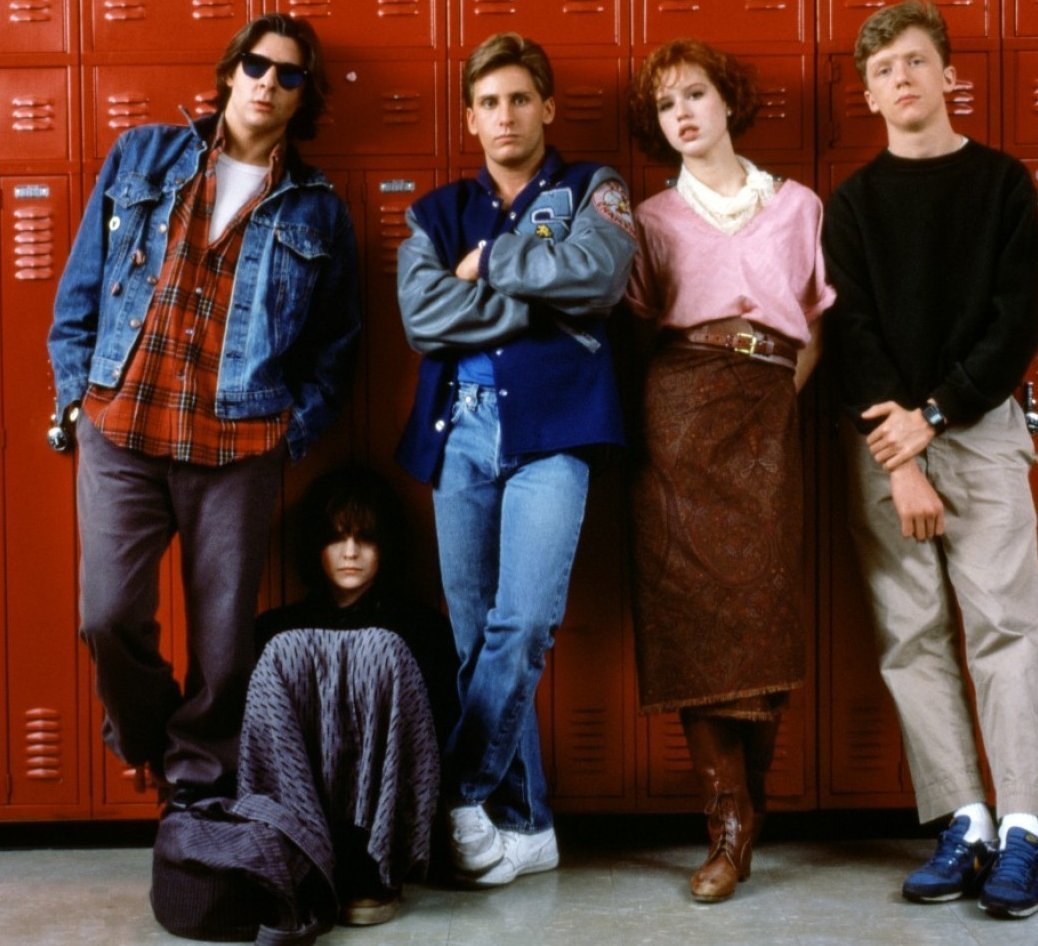 LT80s: Do you think these films could possibly mean as much to a fifteen-year-old watching them today, as they did to the fifteen-year-olds of thirty years ago?
LT80s: Do you think these films could possibly mean as much to a fifteen-year-old watching them today, as they did to the fifteen-year-olds of thirty years ago?
SG: Here’s what I think. Some elements of these films are very much of that time. The fashion is so 80s. The music is so 80s. The fact that no one has a cellphone, no one is tweeting. . . . And so, in that sense, that is nothing like life for a fifteen-year-old today. However, what makes these movies so beloved today, and the reason they were so beloved back then, is stuff that has nothing to do with passing, fleeting moments like fashion. What makes them so beloved are these timeless elements that these films explore, things that will never change. Yeah, these movies are about teenagers and these slight teenage problems, like “Who will go to the prom with me?” But these movies really do deal with timeless questions. Questions you ask when you are an adolescent, like “Who am I?” “How do I fit in the world?” “What kind of person do I want to be?” “What kind of person do I want to fall in love with” “What kind of people do I want to have as friends?” Those are the kinds of questions these 80s movies asked, so brilliantly. And anyone who has ever asked those questions can watch these movies and relate to them deeply.
LT80s: Will we ever stop watching these films? Will they ever be replaced?
SG: Who knows? Maybe twenty years from now someone will write a book about Paper Towns or The Fault in Our Stars, for the people who are twelve or thirteen now and are loving those movies in the same way. But what I do know for sure is that for Generation X, these films truly taught us about how we look at the world — how we look at love, how we look at friendship. Money, class distinction, politics, even the sense of whether we want to be optimists in life or not . . . and I do think these movies taught us to be optimists when possible. One of the things that’s so intoxicating about these 80s movies is, for the most part, they have this incredible optimism in them, this feeling that the nerd can get the babe, the jock can have a heart of gold, that people that are so different can actually be best friends . . . I can’t say enough about how these films shaped us as a generation, and that’s why I felt these films were deserving of a book like this.
Susannah Gora’s You Couldn’t Ignore Me If You Tried: The Brat Pack, John Hughes, and Their Impact on a Generation is available at Amazon.com. 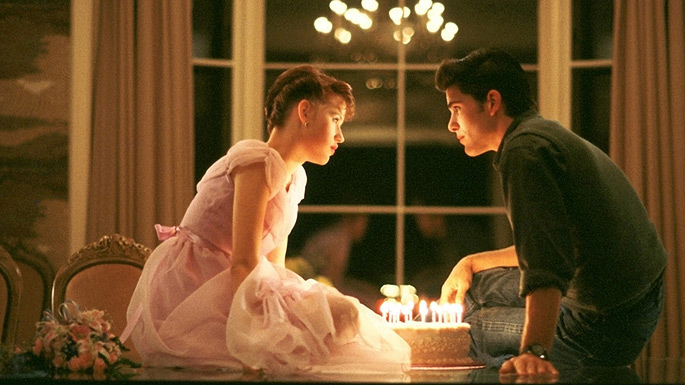

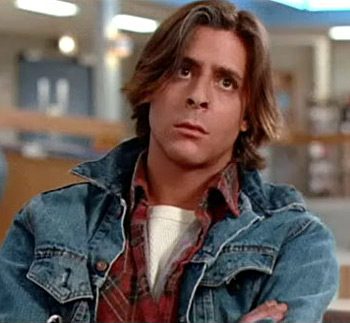
September 25, 2015
Thank you for this.
It was a great article. Hughes was a genius. These movies are timeless. I will definitely buy that book.
October 11, 2015
Wow this sounds like a great book. This is the first I have heard of it, great article. There is no doubt the influence these movies , characters, and actors had on the 80s generations. What I love is those kids now have kids and whole new generations are turning on to this great nostalgia. Seems there is a huge resurgence of all things 80s, which makes since because it was an interesting time for pop culture, music, fashion, sci-fi, comics, and movies and tv. Movie and tv content written by the ex-hippie generations, in which they were able to embed philosophy, ideas, and imagery from that fantastic time of change into the fantasy filled stories for children and adults as well. Just think of all the cartoons that had an intro or outro or both which would discuss some moral, or injustice, or common courtesy, or ways to live right. My favorite is the Mr. T cartoon, his live action segments are amazing, his whole heavy persona and then talking about ways to live right and respect people, and when he said “take it from me, Mr. T”, you friggin’ listened :>
All these movies, as with the ones this book covers, always had an aspect of fantasy too, even if it was a “real life” type story. So much better than the reality filled content in today’s pop culture movies and tv. Not only was it escapism but most stories had some kind of moral, which especially with the teen flicks, regarded the underdog, the outcast, the loner, the wavers, the punks, and showed the aspect of conformity as something that was reached for and then determined to be not the way to go.
Anyway…great time for tv too. Was just discussing the other day the large amount of PI shows that were on tv and once again even these more “real life” type show scenarios always had some aspect of fantasy. One theme you always saw repeated was the detective(s) most times seemed to end up working for free, or for a friend, or for someone in need. It was an interesting contrast to the greed that was going on socio-economically and politically at the time. But this total aspect of fantasy of people like Magnum, living in paradise, living for free on a beautiful estate and driving a Farari and once again, a lot of times would work for free. Its funny because these characters, many times, were total slacker types too, but would always end up getting by some how. But the other commonality was the aspect that these people went against the grain most times.
What a great time…I say 80s culture Come On Down!
October 21, 2015
Great interview! It brought back a ton of great memories and nostalgia, but also had lots of great new information. Well done!
October 30, 2016
Demi Moore trying to freeze herself was actually very realistic did you grow up sheltered? She wanted attention and she was out of her mind on drugs I grew up in Grosse Pointe Michigan very popular girls did stuff like this ! You should read the Virgin suicides. Great interview by the way !